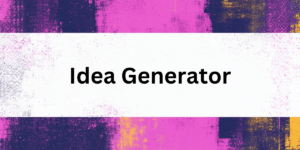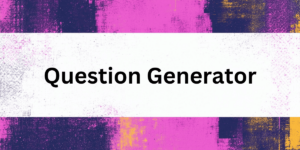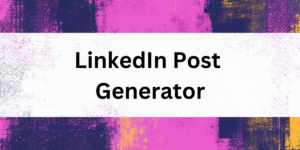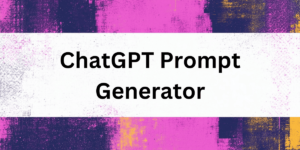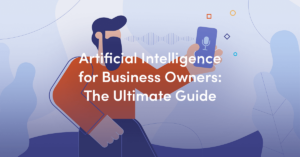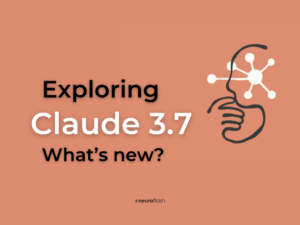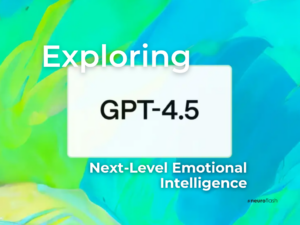Is your brand a hero?
It’s loud outside. The net has become a marketplace that is open all the time and where all the traders are shouting at each other. For twenty-four hours.
Emotions in the advertising jungle: How brands influence us unconsciously
Imagine Times Square, with giant advertising screens vying for your attention. Every advertising banner is designed to arouse a certain emotion in you:
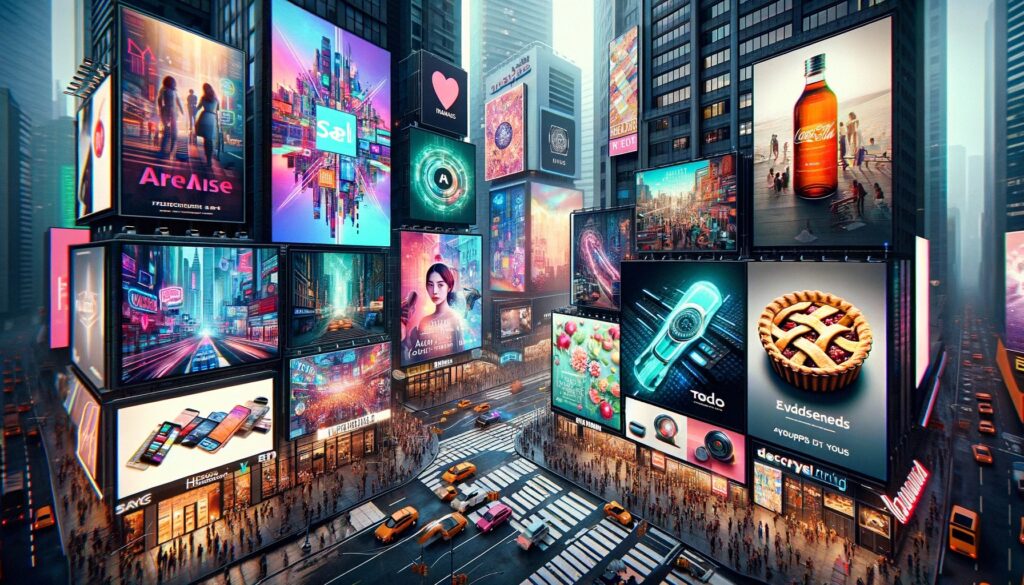
There are the lively ads that offer you more and more benefits and bargains. They evoke the feeling of entertainment and the belief that you are getting a real bargain.
Then there are the elegant, sophisticated advertising messages that tell you exactly what you need. They skillfully play with your unconscious needs, make you feel a little emptiness and then offer you the perfect solution.
The technologically advanced and futuristic displays will amaze you. They convey a feeling of admiration and the hope of how much easier and better your life could be.
And then there are the nostalgic banners advertising homemade apple pies. The smell of grandma’s kitchen, the extra dollop of cream – this advertisement caresses your senses and awakens warm, homely feelings. You feel transported back to your childhood and can almost feel your grandmother’s soft cardigan under your fingers.
Each of these banner ads plays on your emotions in different ways. People may claim that they make purchasing decisions for rational reasons, but in fact they decide “from the gut” and come up with explanations afterwards. Emotions are the key that advertising uses to reach and persuade you.(Study)
“From the gut” is of course more complex than it sounds. You can read about it here:
“Psychological factors that influence purchasing behavior
- Emotions: Emotions play a key role in the purchasing decision. Customers tend to choose products that trigger positive emotions.
- Perception: The way in which customers perceive a product or brand influences their decisions. A positive image can increase the likelihood of a purchase.
- Motivation: The motivation behind the purchase can be diverse, from functional needs to social or psychological motives.
- Learning: Customers learn from experience, reviews and information. Effective marketing takes this learning process into account.”
You can influence all of these points, and today we want to look at the first two: Emotions and perception.
- What emotions should your brand trigger? Security? Happy about a saving? Sustainability?
- How do you want your brand to be perceived? Are you the activating, entertaining barker or rather the hero?
- And what’s the best way to find out?

Emotional control through archetypes: The power of perception
Archetypes are one way of controlling perception and triggered emotions. The archetype used controls perception.
Let’s take the lively ads that offer you more and more benefits and bargains. They evoke the feeling of entertainment and the belief that you are getting a real bargain. These ads correspond to the “entertainer” archetype, which stands for energy and fun.
Then there are the elegant, sophisticated advertising messages that tell you exactly what you need. They skillfully play with your unconscious needs, make you feel a little emptiness and then offer you the perfect solution. These ads represent the archetype of the “seducer”, who stands for sophistication and subtle manipulation.
The technologically advanced and futuristic displays will amaze you. They convey a feeling of admiration and the hope of how much easier and better your life could be. These ads correspond to the archetype of the “magician”, who stands for innovation and transformation.
And then there are the nostalgic banners advertising homemade apple pie. The smell of grandma’s kitchen, the extra dollop of cream – this advertisement caresses your senses and awakens warm, homely feelings. These ads embody the archetype of the “carer”, who stands for warmth and security.
The contrast between these different archetypes shows that the choice of archetype determines whether the brand is perceived as energetic and loud, refined and subtle, innovative and admiring, or warm and authentic. Archetypes are emotional and narrative anchor points in brand development. Which specific emotions or brand perceptions are targeted ultimately depends on the individual brand strategy.
What are archetypes in marketing?
Archetypes are like old friends that we have always known, even if we have only just met them. They are the universal characters of our shared narratives that shape our emotions and expectations without us having to think about them for long.
We use precisely these principles in marketing. When we build our brand around such an archetype, we anchor it in a rich world of emotional narratives. Whether we bring in the “hero”, who stands for success and adventure, or the “sage”, who radiates knowledge and trust, we create an unmistakable identity that is immediately noticeable.
Archetypes allow us to anchor our brand deeply in the emotions and expectations of our audience, and they provide a clear, consistent message that connects directly with our target groups.
How do I find the right brand archetype?
This is how we did it: in our search for the right archetype for our brand, we were inspired by the classic characters: the everyman, the magician and the hero. But we at neuroflash wanted to be more than just one of many – we wanted to build a unique connection. In order to find our own place, we took a close look at Carl Jung’s archetypes and, together with the Kochstraße agency, shaped our ideal archetype in a creative workshop. We have created this not from hard materials, but from the values and visions of our brand.

During the development process, we used visual networks of words to understand the core values of our brand. We discovered our “sweet spot” – a perfect blend of emotion, relevance and authenticity. The keywords anchored there served as a guidepost for the development of our hero archetype, and now they characterize our brand.
But you don’t have to hire an agency, AI can help you!
Prompts to determine archetypes for your own brand
Artificial intelligence can help you find a suitable archetype for your brand in various ways. Here are some steps and suitable prompts to help you:
1. analysis of your brand
The AI can perform a comprehensive analysis of your brand, including your mission, values, products and target group.
Prompt: “Analyze the mission, values, products and target group of my brand [brand name and all important information that you can store in the Brand Hub and integrate into the prompt].”
2. understanding the archetypes
The AI can give you information about different brand archetypes and explain how each archetype is typically perceived.
Prompt: “Explain to me the different brand archetypes and how they are typically perceived.”
3. find agreement
Based on the analysis of your brand and the understanding of the archetypes, the AI can suggest which archetype best suits your brand.
Prompt: “Which brand archetype best suits my brand based on my brand analysis?”
4. adaptation and optimization
Once an archetype is selected, the AI can make suggestions on how you can further adapt and optimize your brand to this archetype.
Prompt: “How can I further optimize my brand to better match [gewählten Archetyp]?”
5. archetypal characteristics
Find terms that describe the specific archetype of your brand.
Prompt: “Describe the characteristics of the archetype ‘[gewählter Archetyp]’ in relation to my brand ‘[Markenname]’. Which terms best fit these characteristics?”
6. competitive analysis
Research competitors to find out what terms they are using and find gaps or unique terms for your brand.
Prompt: “Analyze the terms used by my main competitors in the market for ‘[Produktkategorie]’. What unique terms could I use for my brand ‘[Markenname]’?”
Emotional brand power: How to find the perfect terms with archetypes and PerformanceFlash
Archetypes actually trigger emotions, often on a subconscious level. This means that people react instinctively and emotionally to certain archetypes without always being aware of it. You can use this emotional resonance by choosing certain terms that match the chosen archetype. This is how you steer people’s perceptions and feelings in the desired direction.
Our PerformanceFlash app, which can predict the associations of words in advance, is a great tool to ensure that the terms you choose evoke the desired emotional responses. With PerformanceFlash, you can test terms and analyze how they relate to different archetypes and what associations they trigger in users.
It is important to note that although the terms are characterized by the chosen archetype, they should ultimately describe the brand and the product. Here is an example of how different archetypes might use different terms for the same content:
Example: A new fitness program
1. the hero:
- Terms: “challenge”, “success”, “courage”, “strength”, “winner”
- Description: “Our fitness program is a challenge for true heroes. With courage and strength, you will overcome every hurdle and emerge victorious.”
2. the mother figure:
- Terms: “care”, “well-being”, “security”, “balance”, “health”
- Description: “Our fitness program lovingly takes care of your well-being. Find balance and health in a safe and supportive environment.”
3. the wise man:
- Terms: “wisdom”, “knowledge”, “self-knowledge”, “inner growth”, “understanding”
- Description: “Our fitness program is based on years of knowledge. Gain self-knowledge and inner growth through targeted exercises and a deep understanding of your body.”
With PerformanceFlash, you can analyze which terms evoke the strongest positive associations in your target group. For example, you could test the terms ‘strength’ and ‘courage’ for the hero archetype and find that they trigger strong emotional responses such as motivation and determination.
Steps towards implementation
- Choose the right archetype for your brand: Determine which archetype best suits your brand identity.
- Create a list of terms: Develop a list of terms related to this archetype.
- Use PerformanceFlash: Test these terms with PerformanceFlash to analyze their associations and emotional resonance.
- Optimize: Choose the terms that evoke the strongest positive associations while accurately describing your brand and product.
- Apply: Integrate these terms into your marketing and communication strategy.
Through this combination of archetypes, specifically chosen terms and the support of PerformanceFlash, you can ensure that your brand resonates emotionally and leaves a lasting impression.
The power of the archetype: neuroflash’s unique positioning in the market
neuroflash’s decision to model its brand personality after the hero archetype has influenced our entire redesign(Have you discoveredour new look yet?), our color choices and our communication. This puts us in a unique position in the busy content marketing space and sets us apart from competitors like Jasper, ChatGPT and Anyword who embody the archetype of the magician and focus on creativity, technology and innovation.
By embodying the hero archetype, neuroflash can reflect our clients’ experiences of personal growth and challenges. We emphasize honor, truth and perseverance, which creates a deep and unique emotional bond between neuroflash and our clients. This proves that words really can be mightier than swords.
The archetype of the hero stands for courage, transformation and determination. It serves as a guide for inspired storytelling and the creation of empathetic human relationships. It embodies the universal story of overcoming obstacles to fulfill one’s destiny.
By embodying the subconscious traits of the hero archetype, neuroflash transcends technical skills and becomes an advocate for human growth and transformation. Our brand therefore goes far beyond pure functionality and touches deeper emotional levels.
How does your brand stand out in a crowded market? Do the characteristics of your brand promote a strong emotional connection with your customers? How does the archetype of your brand convey your story? Do your archetype traits go beyond the utilitarian perspective? By choosing the right archetype for your brand, you can also achieve a deep emotional connection and a unique positioning in the market.



